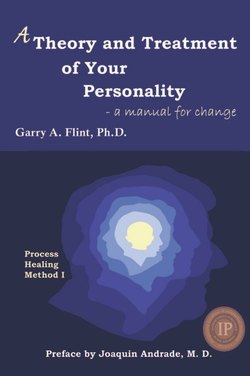Читать книгу A Theory and Treatment of Your Personality - Garry Flint - Страница 49
На сайте Литреса книга снята с продажи.
The formation of the personality
ОглавлениеThe Main Personality starts forming at birth or at some time before birth (see Figure 3-2). All behavior of the Main Personality is remembered in Memory III because the content of the behavior has common qualities that are in some way related to sensory experience, reward and punishment, and basic needs.
Memories included in Memory III depend on the presence of one or more of those common qualities or states of the memories. Therefore, Memory III is called a state-dependent memory. This memory is called Memory III, because there are two other state-dependent memories formed before the age of four, which you will find described in Chapter 5. There are other memory structures in Memory III, which you will learn about in Chapter 8. Our Main Personality and its Ego States are part of the state-dependent Memory III.
The Main Personality, in Memory III, and the subconscious are different in two important ways. The first difference is that the subconscious does not experience sensations such as visual experience, taste, smells, sounds, or “ouches.” The subconscious experiences it without the actual sensory sensations — without the “ouch.” The Main Personality, on the other hand, experiences and remembers all the pain sensations experienced during trauma, such as the pain of verbal and physical abuse. For example, if you pinch yourself, your Main Personality feels the “ouch.” However, the subconscious only has or registers the neural activity leading to the experience of pain and the “ouch.” It’s similar to when you turn on the water at your house. The water meter registers what is happening — water is running. Though the water meter knows water is running, it does not experience the water being wet or squirting. The subconscious, like your water meter, registers the pain without feeling the sensation of pain; therefore, the subconscious experiences the memories of all of your behavior and emotions, but at a different neurological level of involvement and without the experience of physical sensations. The subconscious is not state-dependent and has access to all memories running all neural activity.
The second difference is that the subconscious cannot be damaged or hurt because it does not experience painful sensations. Said another way, the Main Personality and the subconscious handle painful emotions and trauma differently. The Main Personality forms filters and barriers to change or hide painful emotions and trauma to make them more comfortable. Filters and barriers can hide large portions of painful experience or memories from our conscious experience. The absence of painful memories simplifies for the conscious mind the process of creating responses.
On the other hand, the subconscious has no sensory experience in the form of pain and trauma and, therefore, does not have filters and barriers. Hence, it has the capacity to know, without pain, the details of all active memories in the conscious or unconscious experience, even the most painful memories. It also has this same capacity with all memory processes running everything in the brain and body.
It is important to know that active memories are the only memories that can be included in the creation of the next response. A dormant memory is not active and cannot be used. However, if a dormant memory relates in some way to a current active memory, sensation, or emotion, it becomes active and can be used in a response and accessed by the subconscious.
When the subconscious accesses a memory, it has the capacity to know what caused the memory and to treat any emotions associated with it. However, do not expect the information from the subconscious to be easily obtained. Normally, you have to guess with the 20-question procedure to get explanations or information. Once you get the information, the subconscious can then be prompted to detect, review and change memories in the Main Personality.
